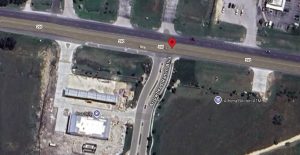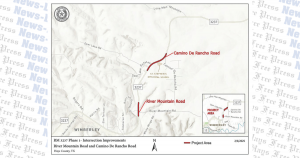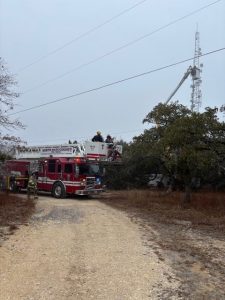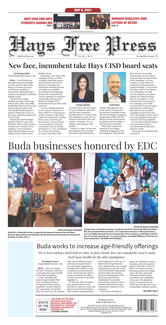Officials discuss regulating cell phone usage
By Camelia Juarez
Distracted driving, along with reducing speeds on U.S. 290, topped a list of resident traffic concerns discussed by State Rep. Erin Zwiener (D-Driftwood) and Hays County law enforcement leaders Aug. 8.
One part of that conversation centered on strengthening Texas’ Hands-Free law, which prohibits drivers from texting or making calls on their phone while driving.
However, Hays County Pct. 4 Constable Ron Hood said police are struggling to enforce the law because the language only prohibits texting or calling. A driver is exempt from a citation if a they are reporting an emergency via text or call or if they are using GPS. Drivers can lie about what they were using their phone for to avoid citations.
Hood recommended adjusting the law to allow law enforcement to see the driver’s phone and confirm if they were using it for an emergency.
“If we have the ability to ask to see their device, they can refuse,” Hood said. “We’re not going to force them, but if you refuse then we can give a citation or confirm they were using their phone for lawful reasons.”
Currently, Hood has his officers perform a “safety stop” to enforce the law.
“If my officers spot a distracted driver, they have been instructed to inform the driver that texting and driving is against the law,” Hood said. “If they claim they were texting to report an emergency or using their GPS, we will provide assistance with their emergency report or give directions.”
Distracted driving accounts for approximately 25% of all motor vehicle crash fatalities, according to Teen Safe data.
Zwiener said distracted driving is one of several safety concerns for the residents who commute or live along U.S. 290 in the Dripping Springs area. There have been 22 fatal accidents along this section of US 290 from 2010 to 2019, according to data from the Texas Department of Transportation (TxDOT).
The most recent accident in May left a man dead after an SUV collided with a semi-truck. There was another fatal accident in April that killed one man and left five others injured.
“We need a mix of strategies. A lot of accidents are attributed to speed or timing of lights, but distracted driving is a major issue. We need to make sure law enforcement has tools to make sure everyone is keeping their eyes on the road,” Zwiener said.
Keeping up with growth is also a factor. Within the next six years, there could be an estimated 9,000 homes built in the Dripping Springs area, according to Dripping Springs ISD data.
Zwiener recognizes it’s a legislator’s responsibility to keep enough funds available for planning and construction in a fast growing county.
“When I first started driving 290 regularly there was a light at Nutty Brown Road and the next light was at (RM) 12. That road has changed so dramatically, so quickly,” Zwiener said. “We need to make sure our transportation and infrastructure keeps up with the use.”
Additionally, the U.S. 290 Safety Coalition is asking TXDOT to reduce the speed limit on the road from 60 to 55 miles per hour (mph) in the Dripping Springs area. Some factors for the request include the number of schools in the area and the road being used for residents’ errands, according to their website.
TXDOT makes changes based on data and has already conducted research on that stretch of the road. In response, the U.S. 290 Safety Coalition is using its own data to argue that a slower speed limit is needed sooner rather than later for the safety of the community.
Zwiener said she is ready to support updates to distracted driving laws and willing to work with the U.S. 290 Safety Coalition and other constituents.









